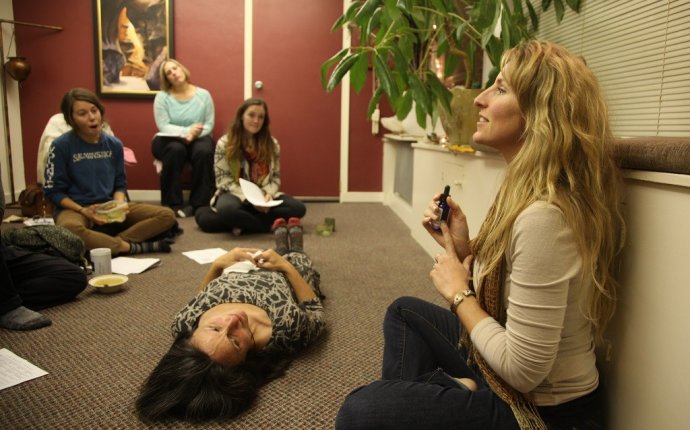
Pronounce Ayurveda
 Amid the holiday season’s celebratory dazzle and shine, it’s all too common to feel not so dazzling yourself. Blame the vitality drain on indulging in excess and disrupting your routine, suggests Ayurveda, India’s ancient healing art. It’s the time of year for overeating, busyness, mental and emotional strain, and high ambition—all of which deplete vitality, says Ayurvedic expert Niika Quistgard, founder of ayurmama.com. Cultivating your inner spark—your true beauty—requires just the opposite: self-nurture, stress management, and keeping your energy levels replenished.
Amid the holiday season’s celebratory dazzle and shine, it’s all too common to feel not so dazzling yourself. Blame the vitality drain on indulging in excess and disrupting your routine, suggests Ayurveda, India’s ancient healing art. It’s the time of year for overeating, busyness, mental and emotional strain, and high ambition—all of which deplete vitality, says Ayurvedic expert Niika Quistgard, founder of ayurmama.com. Cultivating your inner spark—your true beauty—requires just the opposite: self-nurture, stress management, and keeping your energy levels replenished.
See also 6 Steps to Connect to Your Inner Happiness
The Importance of Ojas, or Energy Reserves
According to Ayurveda, our inner glow is fueled by ojas (pronounced oh-jus), a term that refers to the body’s internal energy reserves. “Plentiful ojas results in a juicy suppleness, a lusciousness, ” says Larissa Hall Carlson, dean of the Kripalu School of Ayurveda in Stockbridge, Massachusetts. Ojas energy is described as the end product of good physical and emotional digestion, when you have fully assimilated nutrients and processed your life experiences. It’s also said to be the essence of kapha, the stabilizing water–earth element. Like oil in a lamp, ojas sustains our fierier physical and mental energy, our drive and passion. When replenished regularly, ojas manifests outwardly in glowing skin, bright eyes, and silky hair. Inwardly, it helps your reproductive, nervous, and immune systems thrive and promotes peaceful emotions such as gratitude and contentment. Most importantly, ojas supports stable moods and helps us handle stress with grace and ease.
See also 200 Key Sanskrit Yoga Terms
Protecting that vibrant life force and filling up our inner reserve is Ayurveda’s key to cultivating beauty. Because ojas is associated with kapha (the water dosha, or element), it can be depleted by an excess of Ayurveda’s other two doshas, (air) and pitta (fire), says Hall Carlson. Ojas evaporates when we have excess vata—the result of stress, overstimulation, worry, rushing, and lack of sleep—or it’s burned up by overages of pitta, caused by overwork, anger, or competition. So counterbalancing an overload of vata and pitta is crucial, says Hall Carlson. That means building quiet, calming practices and moments into every day to allow our bodies and minds to settle down and process our experiences.
Ojas and Authentic Beauty: Find Your Inner Glow
Modern science supports the idea that beauty starts with lifestyle. For instance, research has shown that stress, poor diet, and lack of sleep have tangible effects on skin tone and elasticity, and the health of our hair and nails. Stress and sleep loss increase the production of the hormone cortisol, triggering inflammation that breaks down collagen, a protein that keeps skin firm and smooth. Cortisol is also linked to acne. Dermatologists prescribe stress management to help treat skin conditions like rosacea or psoriasis because when pro-inflammatory stress hormones are reduced, it aids in recovery and limits recurrence of skin problems.
The best part of having ample ojas, says Quistgard, is that it encourages peace and contentment, the real source of attractiveness. “Authentic beauty is revealed less through how you look than through your energetic presence—the full effect of your mental and physical energy being in balance, ” says Quistgard. “When someone has abundant energy bubbling over—when they have patience, attention, and energy to share—that’s beauty, ” she says. And that’s irresistible.
Two Easy Ways to Live the Ayurvedic Lifestyle
Eat With People You Love
Nurture yourself on a deeper level by surrounding yourself with loved ones during meals, says Shruthi Bajaj, an Ayurvedic chef and founder of the Cardamom Kitchen blog at cardamom-kitchen.com. “Healthy relationships increase your ojas, and gathering for a meal with loved ones can be particularly beneficial at this time of the year, ” says Chef Bajaj.














